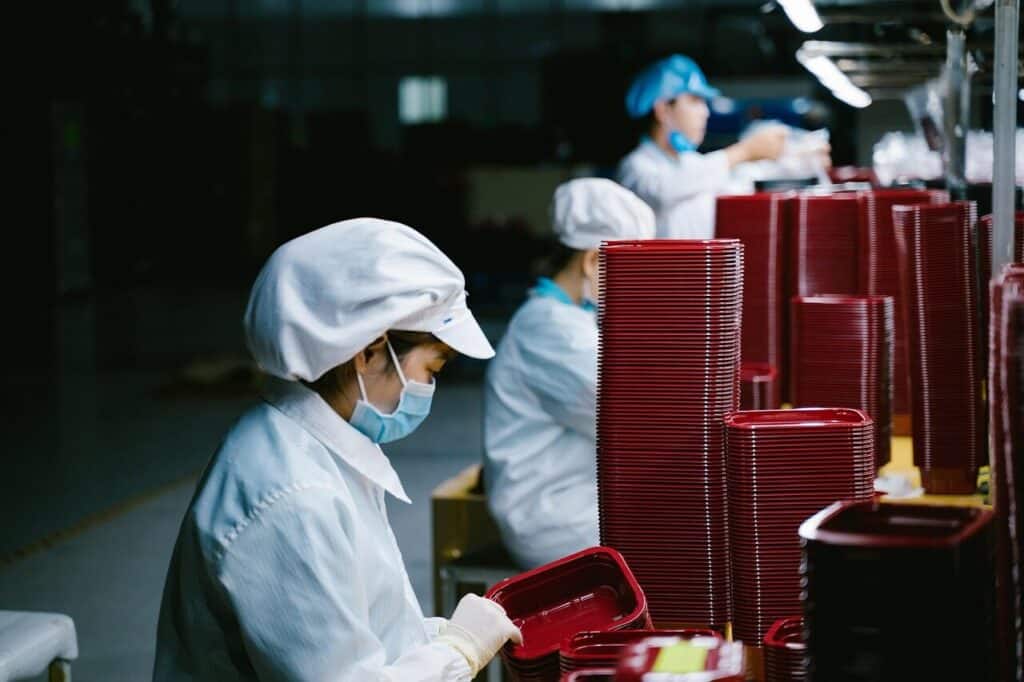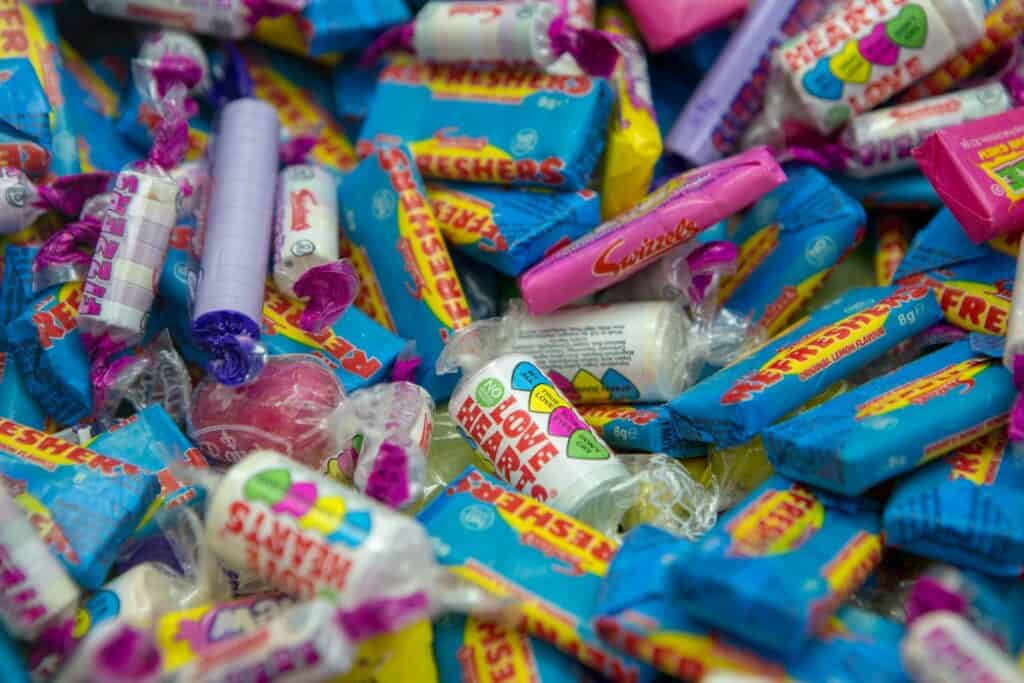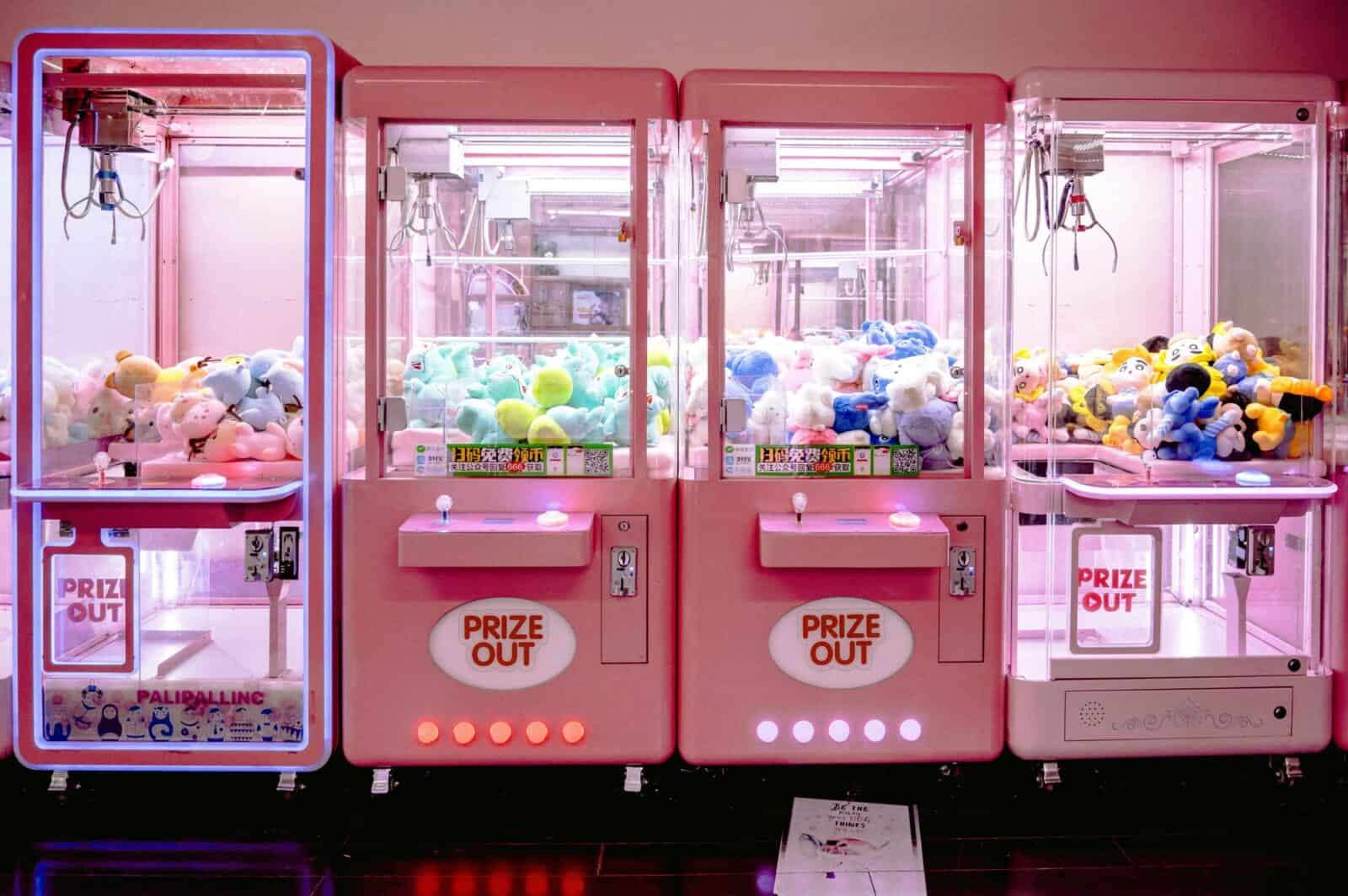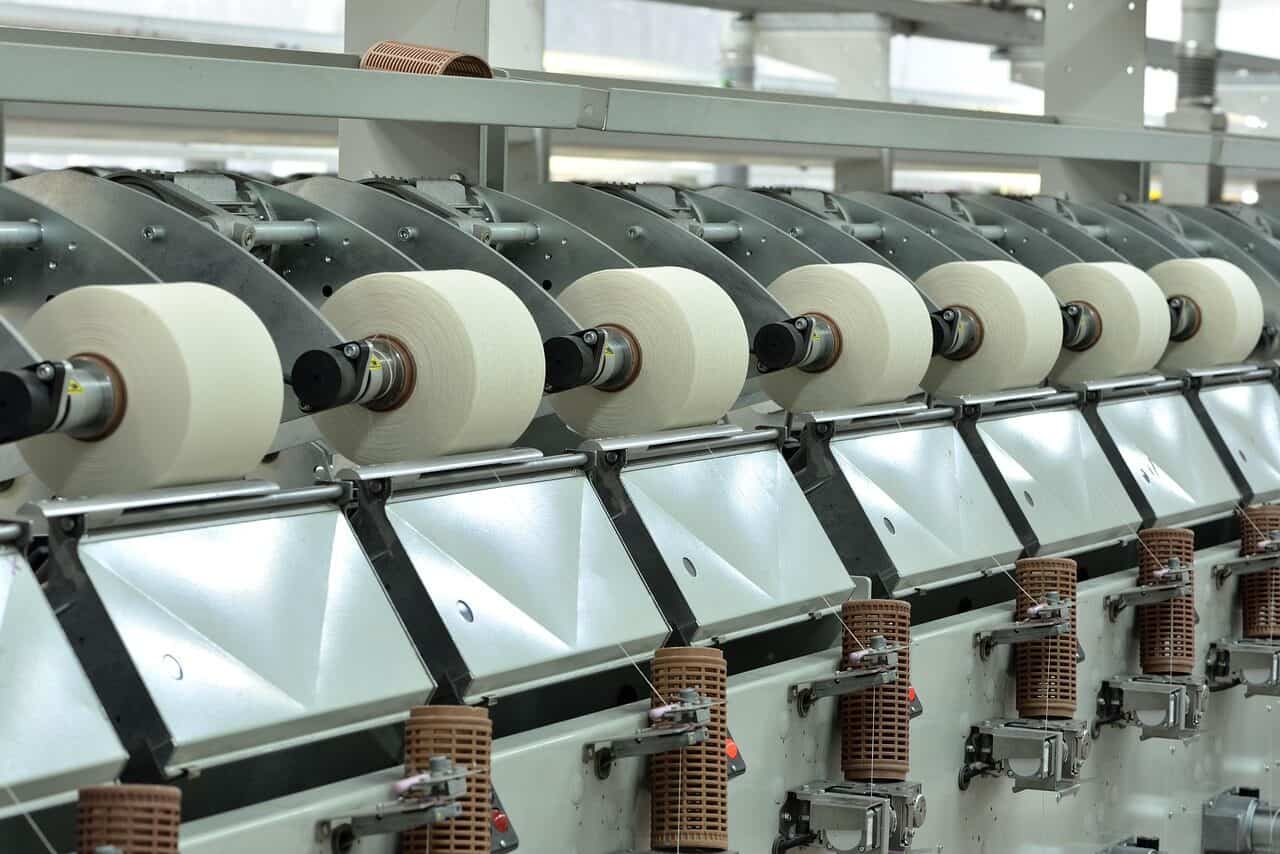Linha de produção de doces de alta eficiência da China
A China tornou-se líder global em manufatura avançada, e suas linhas de produção de doces não são exceção. Com tecnologias inovadoras e processos otimizados, essas linhas de produção estão estabelecendo novos padrões de eficiência e escalabilidade. Mas você já se perguntou o que faz com que seus sistemas de produção de doces sejam tão extraordinariamente eficientes?
O mercado global de confeitaria é um setor multibilionário e em seu cerne está a engenharia sofisticada. Para os alunos que estão se preparando para entrar no setor industrial, é fundamental compreender a mecânica da fabricação em larga escala. A China se estabeleceu como líder global na produção de produtos de alta eficiência. linhas de produção de doces, A empresa de automação de processos de produção, que oferece um estudo de caso convincente em automação, controle de qualidade e otimização de processos. Um mergulho profundo nesses sistemas revela os princípios técnicos e as oportunidades de carreira disponíveis para a próxima geração de engenheiros.
Este guia oferece uma visão geral técnica das modernas linhas de produção de doces fabricadas na China. Analisaremos os principais estágios do processo de fabricação, desde o processamento da matéria-prima até a embalagem final, e exploraremos as inovações de engenharia que impulsionam a eficiência e a qualidade. Para os aspirantes a engenheiros, essa análise esclarecerá a aplicação prática de seus estudos e mostrará as habilidades necessárias para se destacar no setor de processamento de alimentos.
Anatomia de uma moderna linha de produção de doces
Um doce totalmente automatizado linha de produção é um sistema integrado de maquinário especializado projetado para uma fabricação contínua e de alto volume. Fabricantes chineses, como a Junyu, refinaram esses sistemas ao longo de décadas, concentrando-se na confiabilidade, precisão e escalabilidade. O processo pode ser dividido em cinco estágios críticos de engenharia.
1. Preparação e cozimento da matéria-prima
A base de qualquer produto de confeitaria é a combinação e o cozimento precisos de seus ingredientes básicos, geralmente açúcar, água e xarope de glicose. Esse estágio inicial é crucial para determinar a textura e a qualidade finais do doce.
- Princípios de engenharia: Essa etapa envolve princípios de termodinâmica, dinâmica de fluidos e controle de processos. Os sistemas automatizados usam células de carga para pesagem e mistura precisas de matérias-primas em grandes chaleiras com camisa de vapor. Os controladores lógicos programáveis (PLCs) gerenciam o ciclo de cozimento, regulando com precisão a temperatura e a pressão para atingir a concentração e a viscosidade desejadas do açúcar.
- Especificações técnicas: Os cozedores de alta capacidade podem processar várias centenas de quilos de xarope por hora. Os sistemas de controle de temperatura devem manter a precisão de ±1°C para evitar a cristalização ou a queima. As câmaras de vácuo são frequentemente integradas para resfriar rapidamente o xarope e remover o excesso de umidade, uma etapa essencial para a produção de balas duras.

2. Mistura, dosagem e aromatização
Depois que o xarope base é cozido, ele passa para o estágio de mistura e dosagem, no qual são incorporados cores, sabores e outros aditivos, como o ácido cítrico. A consistência é fundamental, pois até mesmo pequenas variações podem afetar o produto final.
- Princípios de engenharia: Essa fase depende da tecnologia de dosagem e mistura de precisão. São empregados misturadores estáticos ou dinâmicos para garantir a distribuição uniforme dos aditivos em toda a massa de xarope. Bombas de alta precisão, geralmente baseadas em pistão ou engrenagem, são calibradas para injetar quantidades exatas de líquidos. Para os estudantes de engenharia, essa é uma aplicação prática da ciência dos materiais e dos sistemas de controle automatizados.
- Especificações técnicas: Os sistemas de dosagem são projetados para garantir a precisão, com uma tolerância típica de ±0,5%. O equipamento de mistura é construído em aço inoxidável de grau alimentício (geralmente 304 ou 316L) para atender aos rigorosos padrões de higiene e evitar a corrosão.
3. Formação e depósito
É aqui que o doce ganha sua forma final. O método usado depende do tipo de doce que está sendo produzido. Para balas de goma e de gelatina, Em um processo de depósito, um processo de depósito é padrão.
- Princípios de engenharia: A tecnologia de depósito é uma maravilha da mecatrônica. Os depositadores servo-acionados usam uma série de bicos para preencher com precisão os moldes com a massa líquida do doce. A coordenação do movimento do cabeçote do depositador com a velocidade do transportador é gerenciada por sistemas avançados de controle de movimento. Isso garante que cada cavidade do molde seja preenchida com precisão, sem derramamento.
- Especificações técnicas: Os dosadores modernos podem atingir taxas de produção de mais de 30.000 doces por minuto. Os servomotores fornecem controle preciso sobre o volume e a velocidade de depósito, garantindo a consistência do peso em todos os produtos. Os moldes são normalmente feitos de silicone de grau alimentício ou metal revestido com um agente desmoldante.
4. Resfriamento e desmoldagem
Após a formação, os doces devem ser resfriados para solidificar em seu estado final. Esse processo deve ser cuidadosamente controlado para garantir a integridade estrutural e evitar defeitos.
- Princípios de engenharia: O estágio de resfriamento é uma aplicação direta dos princípios de transferência de calor. Os doces passam por túneis de resfriamento longos e isolados, por onde circula o ar resfriado. A temperatura, a umidade e o fluxo de ar são regulados com precisão para garantir um resfriamento uniforme. Um processo de resfriamento ineficiente pode resultar em produtos deformados ou pegajosos. Depois de solidificados, sistemas mecânicos ou pneumáticos são usados para ejetar os doces dos moldes.
- Especificações técnicas: Os túneis de resfriamento podem ter mais de 50 metros de comprimento. O tempo de permanência dentro do túnel é programável e pode variar de 10 a 30 minutos, dependendo do tipo de bala. A temperatura do ar é normalmente mantida entre 5°C e 10°C.
5. Embalagem
O estágio final é a embalagem, em que a automação desempenha um papel fundamental na manutenção da higiene e na preparação do produto para distribuição.
- Princípios de engenharia: As máquinas de embalagem de alta velocidade integram robótica, visão computacional e engenharia mecânica. As máquinas de classificação usam sensores para eliminar produtos defeituosos. Em seguida, as máquinas de empacotamento embrulham individualmente cada doce antes de serem agrupados e ensacados por máquinas VFFS (vertical form fill seal).
- Especificações técnicas: Uma linha de embalagem moderna pode embalar e ensacar milhares de doces por minuto. Os sistemas de visão podem inspecionar os produtos quanto a irregularidades de tamanho, forma e cor com precisão superior a 99%.

Engenharia de uma carreira na fabricação de alimentos
O setor de processamento de alimentos é um grande empregador de engenheiros mecânicos, elétricos e químicos. Empresas como a Junyu, com mais de 30 anos de experiência, estão constantemente inovando e exigem profissionais qualificados para projetar, operar e manter esses sistemas complexos.
Para um aspirante a engenheiro, a compreensão dessas linhas de produção oferece um caminho direto para uma carreira estável e gratificante. As habilidades que você desenvolve em seu curso - desde programação de PLC e termodinâmica até ciência dos materiais e integração de sistemas - são diretamente aplicáveis. A experiência prática adquirida por meio de estágios ou projetos relacionados à automação industrial o tornará um candidato altamente valioso para cargos com foco em tecnologia nesse setor.
Aplicações do setor de doces
O setor de doces é um excelente exemplo de como a automação industrial e os princípios de engenharia convergem para criar processos de produção eficientes e de alta qualidade. Desde a mistura de ingredientes até a modelagem, o corte e a embalagem dos doces, as tecnologias avançadas de automação garantem precisão, consistência e escalabilidade. Os engenheiros especializados em robótica e sistemas de controle geralmente projetam e otimizam máquinas, como sistemas de transporte, braços robóticos e equipamentos de embalagem. Compreender a sincronização da linha de produção, os controles de temperatura para temperar o chocolate e os sistemas de garantia de qualidade pode aumentar significativamente a eficiência operacional. Para os aspirantes a engenheiros, a participação em projetos que simulam essas aplicações pode fornecer insights valiosos sobre desafios e soluções específicos do setor, tornando-o um candidato desejável para carreiras nesse setor próspero.
Tendências futuras da linha de produção de doces
O futuro da produção de doces está prestes a ser revolucionado pelos avanços tecnológicos e pelas mudanças nas demandas dos consumidores. Espera-se que a automação e a manufatura inteligente dominem, com a integração da inteligência artificial (IA) e da Internet das Coisas (IoT) permitindo o monitoramento em tempo real e a manutenção preditiva do maquinário. Isso garante o mínimo de tempo de inatividade e a maximização da eficiência. Além disso, a sustentabilidade está se tornando um foco importante, com os fabricantes adotando materiais ecologicamente corretos e processos com eficiência energética para reduzir o impacto ambiental. Inovações como a impressão 3D para designs de confeitos personalizados e robótica avançada para embalagens de precisão também estão ganhando força. Para os estudantes de engenharia, compreender essas tendências emergentes e adquirir habilidades técnicas relevantes será fundamental para se destacar nesse setor dinâmico. Participar de workshops especializados e certificações em automação, IA e fabricação sustentável pode dar aos aspirantes a engenheiros uma vantagem competitiva na formação da próxima geração de produção de doces.

Para prosperar no campo em evolução da produção de doces, os engenheiros devem combinar criatividade com conhecimento técnico. Ao dominar tecnologias de ponta, como automação, IA e práticas de fabricação sustentáveis, os alunos podem se posicionar como pioneiros nesse setor vibrante. O futuro da produção de doces não se resume à criação de guloseimas deliciosas - trata-se de revolucionar o processo para torná-lo mais eficiente, ecológico e inovador. Com determinação, o conjunto certo de habilidades e um compromisso com o crescimento, os estudantes de engenharia de hoje têm oportunidades inigualáveis de promover avanços significativos e moldar o futuro desse setor de doces.
Perguntas frequentes sobre a linha de produção de doces
1. Quais são as principais tecnologias usadas nas modernas linhas de produção de doces?
A produção moderna de doces utiliza tecnologias avançadas, como automação, robótica e sistemas alimentados por IA. Eles simplificam processos como mistura, moldagem, revestimento e embalagem. Outras inovações incluem a impressão 3D para projetos personalizados e sensores de IoT para monitorar a qualidade e a eficiência.
2. Como os estudantes de engenharia podem se preparar para uma carreira na produção de doces?
Os alunos de engenharia devem se concentrar em desenvolver conhecimentos em áreas como robótica, automação de processos e fabricação sustentável. A participação em workshops do setor, estágios e a obtenção de certificações relevantes proporcionarão a experiência prática e o conhecimento prático exigidos pelas empresas desse campo.
3. Qual é o papel da sustentabilidade na fabricação de doces?
A sustentabilidade está se tornando um foco importante, com as empresas adotando máquinas eficientes em termos de energia, embalagens biodegradáveis e técnicas de redução de resíduos. Os engenheiros que entendem de tecnologias ecologicamente corretas e práticas de fabricação ecológicas são altamente valorizados no setor.
4. As certificações são importantes para trabalhar na engenharia de produção de doces?
Sim, as certificações em áreas como mecatrônica, automação industrial e manufatura enxuta podem aumentar significativamente a empregabilidade de um candidato. Elas validam o conhecimento técnico e se alinham às expectativas das principais empresas.
5. Quais são algumas oportunidades de carreira para engenheiros no setor de doces?
Os engenheiros podem exercer funções em projeto de linhas de produção, A empresa pode gerenciar operações, controle de qualidade, pesquisa e desenvolvimento e até mesmo implementar iniciativas de sustentabilidade. Existem oportunidades tanto em fabricantes de grande porte quanto em empresas de fabricação artesanal de doces.
6. Como os projetos do mundo real ajudam os alunos a se prepararem para esse setor?
Os projetos do mundo real reproduzem os desafios do setor, permitindo que os alunos apliquem conceitos teóricos em um ambiente prático. Os projetos que se concentram em automação, otimização de processos ou gerenciamento de resíduos preparam os alunos para lidar com as ineficiências da linha de produção de forma eficaz.
7. Que tendências estão moldando o futuro da produção de doces?
As principais tendências incluem o aumento do uso de IA para manutenção preditiva, robótica para tarefas de precisão e a demanda por personalização por meio de tecnologias como a impressão 3D. Além disso, a sustentabilidade desempenhará um papel central, impulsionando a adoção de energia renovável e práticas ecologicamente corretas.
Links de referência:
- https://www.fda.gov/ FDA - Normas e regulamentos de fabricação de alimentos
- https://en.wikipedia.org/wiki/Food_processing Wikipedia - Processamento de alimentos
- https://www.sciencedirect.com/ ScienceDirect - Pesquisa em Engenharia de Alimentos
- https://www.ift.org/ Instituto de Tecnólogos em Alimentos (IFT)
- https://www.iso.org/ ISO - Padrões de gerenciamento de segurança de alimentos
- https://www.asme.org/ ASME - Normas para equipamentos de processamento de alimentos
- https://www.pmmi.org/ PMMI - Instituto de Fabricantes de Máquinas de Embalagem
- https://www.automationworld.com/ Automation World - Tecnologia de fabricação de alimentos
- https://www.foodengineeringmag.com/ Revista Food Engineering
- https://www.researchgate.net/ ResearchGate - Pesquisa sobre automação da produção de alimentos










